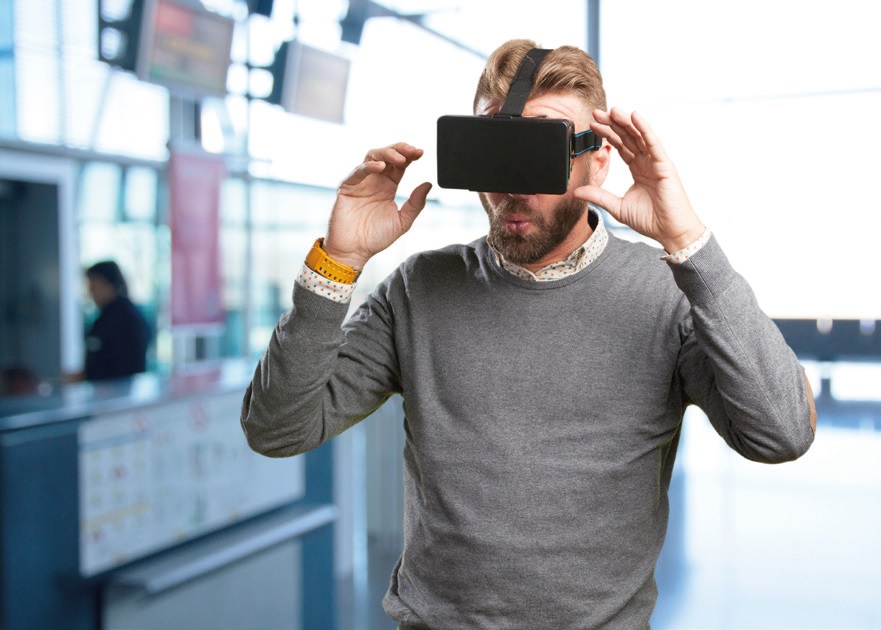Virtual Reality
No more remote-controllers or a mouse. Just look. A company has developed a new eye-tracking technology to be used with virtual reality. VR (virtual reality) changed entertainment, like movies, games and live sport shows. It is now also used in business. It can help someone who is looking for a house or a new car. It helps you feel as if you are in that place. It is also used to train pilots and surgeons.
Virtual reality, or "VR," is a kind of computer technology. It can make imaginary worlds seem real. The new eye-tracking technology was made by Fove. It is a small company which was founded in 2014. The company has offices in Tokyo, San Francisco and Los Angeles. The technology works through the use of a large headset with goggles. Inside the goggles there is a computer screen and tiny sensors. The sensors track the movements of the wearer's pupils as he or she looks at the screen.
VR makes a person feel as if he or she is in a 360-degree, fictional world made by a computer. It seems like the person is actually there. When a user lifts his or her hand for example, the character displayed on the computer screen lifts its hand too. Fove's eye-tracking technology is designed to make VR even better. It reacts to where the user is looking. "It allows you to go inside the world that's behind the display," said Fove co-creator Yuka Kojima.
Not everyone likes the idea of VR technology. Some people worry that it could harm a person's health.
Some worry that VR fans will get too involved in fantasy worlds. “They might abandon their real life and prefer to live in that world,” they say.
But Fove developers say VR can play a positive role. They say that VR can do good things. They showed possible uses of the eye-tracking technology to make their point.
In one example, Fove shows a grandmother using the eye-tracking headset to attend her grandson’s wedding. She's unable to leave her bed and go out but she sends a robot, controlled by her eyes in her place. The woman happily reaches out as if the couple is right there with her.
The technology could also help people with disabilities. People with different disabilities could use their eyes to do things they couldn't otherwise do. As an example, a young man who couldn't move his arms or fingers, used eye movements to play a piano.
“We want to do things with VR that people haven’t thought about, or have thought to be impossible,” said Wilson, who met Kojima while she was studying English for four months in Australia. “And we have got other secret projects in the future.”

